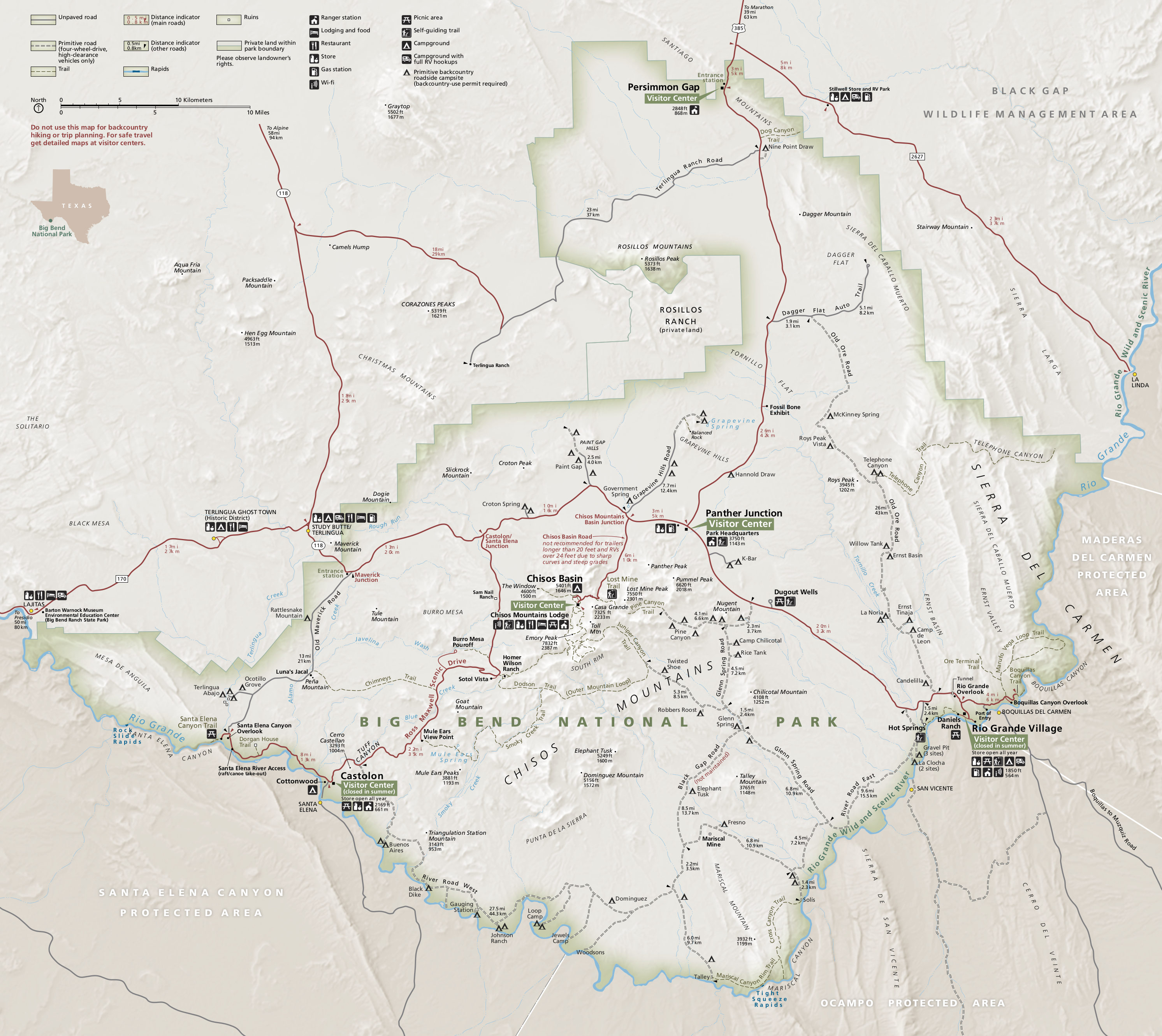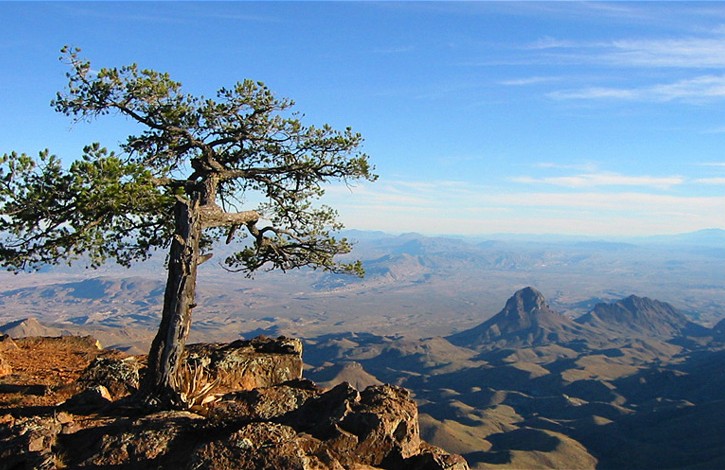|
Cañón De Santa Elena Flora And Fauna Protection Area
The Cañón de Santa Elena Flora and Fauna Protection Area (Spanish: ''Área de Protección de Flora y Fauna Cañón de Santa Elena'') is a protected area for plants and wildlife in the Mexican municipalities of Manuel Benavides and Ojinaga, in the state of Chihuahua. It was founded on November 7, 1994 and has an area of 277,209 hectares. The purpose of the reserve is to protect the Chihuahuan Desert, home to many species of plants and wildlife. Among the first scrub stands microphyll desert, the desert scrub rosetophilous, the pasture, the oak forest and riparian vegetation, including various species abound. In the second highlights the birds and mammals that have adapted to aridity, such as wildcat and some deer, as well as birds of prey. History The arrowheads, mortars and paintings found at the site indicate the following human occupation periods: Paleo-Indian (15,000–6,500 BC), Archaic (6500 BC – 900 AD), early Postclassic (900–1500 AD), and late Postclass ... [...More Info...] [...Related Items...] OR: [Wikipedia] [Google] [Baidu] |
Big Bend National Park
Big Bend National Park is an American national park located in West Texas, bordering Mexico. The park has national significance as the largest protected area of Chihuahuan Desert topography and ecology in the United States, and was named after a large bend in the Rio Grande/Río Bravo. The park protects more than 1,200 species of plants, more than 450 species of birds, 56 species of reptiles, and 75 species of mammals. Additional park activities include scenic drives, programs led by Big Bend park rangers, and stargazing. The area has a rich cultural history, from archeological sites dating back nearly 10,000 years to more recent pioneers, ranchers, and miners. The Chisos Mountains are located in the park, and are the only mountain range in the United States to be fully contained within the boundary of a national park. Geological features in the park include sea fossils and dinosaur bones, as well as volcanic dikes. The park encompasses an area of , entirely within Bre ... [...More Info...] [...Related Items...] OR: [Wikipedia] [Google] [Baidu] |
Chiricahua
Chiricahua ( ) is a band of Apache Native Americans. Based in the Southern Plains and Southwestern United States, the Chiricahua (Tsokanende ) are related to other Apache groups: Ndendahe (Mogollon, Carrizaleño), Tchihende (Mimbreño), Sehende (Mescalero), Lipan, Salinero, Plains, and Western Apache. Chiricahua historically shared a common area, language, customs, and intertwined family relations with their fellow Apaches. At the time of European contact, they had a territory of 15 million acres (61,000 km2) in Southwestern New Mexico and Southeastern Arizona in the United States and in Northern Sonora and Chihuahua in Mexico. Today Chiricahua are enrolled in three federally recognized tribes in the United States: the Fort Sill Apache Tribe, located near Apache, Oklahoma, with a small reservation outside Deming, New Mexico; the Mescalero Apache Tribe of the Mescalero Reservation near Ruidoso, New Mexico; and the San Carlos Apache Tribe in southeastern Arizona. Name ... [...More Info...] [...Related Items...] OR: [Wikipedia] [Google] [Baidu] |
Apaches
The Apache () are a group of culturally related Native American tribes in the Southwestern United States, which include the Chiricahua, Jicarilla, Lipan, Mescalero, Mimbreño, Ndendahe (Bedonkohe or Mogollon and Nednhi or Carrizaleño and Janero), Salinero, Plains (Kataka or Semat or " Kiowa-Apache") and Western Apache ( Aravaipa, Pinaleño, Coyotero, Tonto). Distant cousins of the Apache are the Navajo, with whom they share the Southern Athabaskan languages. There are Apache communities in Oklahoma and Texas, and reservations in Arizona and New Mexico. Apache people have moved throughout the United States and elsewhere, including urban centers. The Apache Nations are politically autonomous, speak several different languages, and have distinct cultures. Historically, the Apache homelands have consisted of high mountains, sheltered and watered valleys, deep canyons, deserts, and the southern Great Plains, including areas in what is now Eastern Arizona, North ... [...More Info...] [...Related Items...] OR: [Wikipedia] [Google] [Baidu] |
Chisos
The Chisos Mountains, also known as the Chisos, are a mountain range located in the Big Bend area of the Trans-Pecos region of Texas, United States. The mountain system covers 40 square miles (104 square km) and is contained entirely within the boundaries of Big Bend National Park, making it the only mountain range in the United States fully contained within a national park. The Chisos Mountains are the southernmost mountain range in the mainland United States. The Chisos Mountains were created by volcanic activity during the Eocene Epoch 35-44 million years ago. The highest point in the Chisos Mountain range is Emory Peak at above sea level. Location The Chisos Mountains are located in Big Bend National Park. The range of mountains extends twenty miles from Punta de la Sierra in the southwest to Panther Junction in the northeast. An extensive trail system and permit-required backcountry campsites are maintained by Big Bend National Park for its visitors. The Northeast Rim ... [...More Info...] [...Related Items...] OR: [Wikipedia] [Google] [Baidu] |
Jumano
Jumanos were a tribe or several tribes, who inhabited a large area of western Texas, New Mexico, and northern Mexico, especially near the Junta de los Rios region with its large settled Indigenous population. They lived in the Big Bend area in the mountain and basin region. Spanish explorers first recorded encounters with the Jumano in 1581. Later expeditions noted them in a broad area of the Southwest and the Southern Plains. The last historic reference was in a 19th-century oral history, but their population had already declined by the early 18th century. Scholars have generally argued that the Jumanos disappeared as a distinct people by 1750 due to infectious disease, the slave trade, and warfare, with remnants absorbed by the Apache or Comanche. Name Variant spellings of the name attested in Spanish documents include ''Jumana'', ''Xumana'', ''Humana'', ''Umana'', ''Xoman'', and ''Sumana''. The Jumano enigma Spanish records from the 16th to the 18th centuries freque ... [...More Info...] [...Related Items...] OR: [Wikipedia] [Google] [Baidu] |
Conchos
The Río Conchos (Conchos River) is a large river in the Mexican state of Chihuahua. It joins the Río Bravo del Norte (known in the United States as the Rio Grande) at the town of Ojinaga, Chihuahua. Description The Rio Conchos is the main river in the state of Chihuahua and the Rio Grande's largest tributary. It is one of the most important river systems in all of northern Mexico. The Conchos has several reservoirs that make use of its water for agricultural and hydropower uses. Course The Conchos rises in the Sierra Madre Occidental in the municipality of Bocoyna, Chihuahua, where it heads east and receives several tributaries along the way. At Valle de Zaragoza municipality, Chihuahua, it is stopped at the La Boquilla Dam, the largest in Chihuahua forming Toronto Lake. It then heads east again, forming Colina Lake and then passes through Camargo, Chihuahua, the main agricultural center in the region, where it receives the Florido as a tributary. From there, the Conchos h ... [...More Info...] [...Related Items...] OR: [Wikipedia] [Google] [Baidu] |
Agriculture
Agriculture or farming is the practice of cultivating plants and livestock. Agriculture was the key development in the rise of sedentary human civilization, whereby farming of domesticated species created food surpluses that enabled people to live in cities. The history of agriculture began thousands of years ago. After gathering wild grains beginning at least 105,000 years ago, nascent farmers began to plant them around 11,500 years ago. Sheep, goats, pigs and cattle were domesticated over 10,000 years ago. Plants were independently cultivated in at least 11 regions of the world. Industrial agriculture based on large-scale monoculture in the twentieth century came to dominate agricultural output, though about 2 billion people still depended on subsistence agriculture. The major agricultural products can be broadly grouped into foods, fibers, fuels, and raw materials (such as rubber). Food classes include cereals ( grains), vegetables, fruits, cooking oils, m ... [...More Info...] [...Related Items...] OR: [Wikipedia] [Google] [Baidu] |
Hunting
Hunting is the human practice of seeking, pursuing, capturing, or killing wildlife or feral animals. The most common reasons for humans to hunt are to harvest food (i.e. meat) and useful animal products ( fur/ hide, bone/ tusks, horn/ antler, etc.), for recreation/ taxidermy (see trophy hunting), to remove predators dangerous to humans or domestic animals (e.g. wolf hunting), to eliminate pests and nuisance animals that damage crops/ livestock/ poultry or spread diseases (see varminting), for trade/tourism (see safari), or for ecological conservation against overpopulation and invasive species. Recreationally hunted species are generally referred to as the '' game'', and are usually mammals and birds. A person participating in a hunt is a hunter or (less commonly) huntsman; a natural area used for hunting is called a game reserve; an experienced hunter who helps organize a hunt and/or manage the game reserve is known as a gamekeeper. Many non-human anima ... [...More Info...] [...Related Items...] OR: [Wikipedia] [Google] [Baidu] |
Harvest
Harvesting is the process of gathering a ripe crop from the fields. Reaping is the cutting of grain or pulse for harvest, typically using a scythe, sickle, or reaper. On smaller farms with minimal mechanization, harvesting is the most labor-intensive activity of the growing season. On large mechanized farms, harvesting uses the most expensive and sophisticated farm machinery, such as the combine harvester. Process automation has increased the efficiency of both the seeding and harvesting processes. Specialized harvesting equipment utilizing conveyor belts to mimic gentle gripping and mass-transport replaces the manual task of removing each seedling by hand. The term "harvesting" in general usage may include immediate postharvest handling, including cleaning, sorting, packing, and cooling. The completion of harvesting marks the end of the growing season, or the growing cycle for a particular crop, and the social importance of this event makes it the focus of seasonal ce ... [...More Info...] [...Related Items...] OR: [Wikipedia] [Google] [Baidu] |
Fishing
Fishing is the activity of trying to catch fish. Fish are often caught as wildlife from the natural environment, but may also be caught from stocked bodies of water such as ponds, canals, park wetlands and reservoirs. Fishing techniques include hand-gathering, spearing, netting, angling, shooting and trapping, as well as more destructive and often illegal techniques such as electrocution, blasting and poisoning. The term fishing broadly includes catching aquatic animals other than fish, such as crustaceans (shrimp/lobsters/ crabs), shellfish, cephalopods (octopus/squid) and echinoderms (starfish/sea urchins). The term is not normally applied to harvesting fish raised in controlled cultivations ( fish farming). Nor is it normally applied to hunting aquatic mammals, where terms like whaling and sealing are used instead. Fishing has been an important part of human culture since hunter-gatherer times, and is one of the few food production activities that ha ... [...More Info...] [...Related Items...] OR: [Wikipedia] [Google] [Baidu] |
Mesoamerican Chronology
Mesoamerican chronology divides the history of prehispanic Mesoamerica into several periods: the Paleo-Indian (first human habitation until 3500 BCE); the Archaic (before 2600 BCE), the Preclassic or Formative (2500 BCE – 250 CE), the Classic (250–900 CE), and the Postclassic (); as well as the post European contact Colonial Period (1521–1821), and Postcolonial, or the period after independence from Spain (1821–present). The periodisation of Mesoamerica by researchers is based on archaeological, ethnohistorical, and modern cultural anthropology research dating to the early twentieth century. Archaeologists, ethnohistorians, historians, and cultural anthropologists continue to work to develop cultural histories of the region. Overview Paleo-Indian period 10,000–3500 BCE The Paleo-Indian (less frequently, ''Lithic'') period or era is that which spans from the first signs of human presence in the region, to the establishment of agricult ... [...More Info...] [...Related Items...] OR: [Wikipedia] [Google] [Baidu] |








.png)